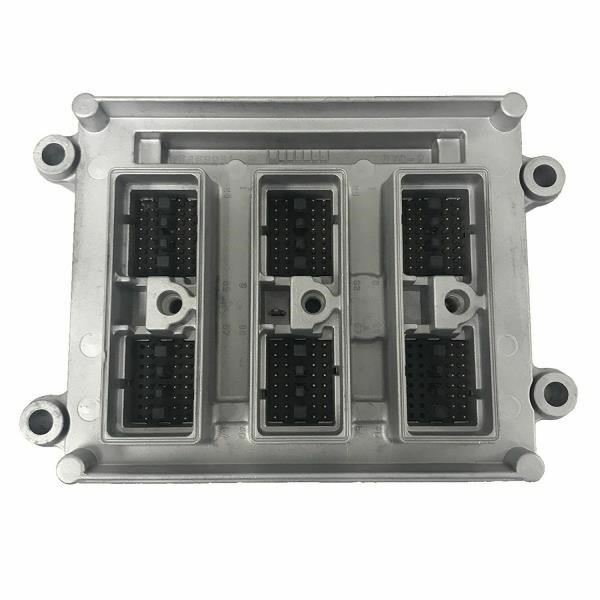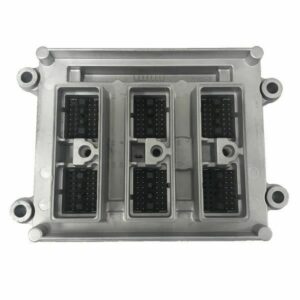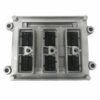Restore Peak Performance to Your GM SUV with a VIN-Programmed Engine Computer
If you’re dealing with a frustrating no-start condition, a persistent Check Engine Light, or erratic engine behavior in your 2002 Oldsmobile Bravada or related GM SUV, a failing Powertrain Control Module (PCM) is often the culprit. As the central computer of your vehicle, a faulty PCM can cause a cascade of problems, from poor fuel economy to unpredictable shifting. This isn’t just an inconvenience; it’s a reliability issue. We offer a direct-fit, dependable solution: a replacement PCM, part number 19210066, professionally programmed to your vehicle’s specific Vehicle Identification Number (VIN).
Forget the hassle and high cost of a dealership visit. We handle the critical programming for you before we ship. By flashing the module with the latest official GM software updates, we ensure it communicates flawlessly with your vehicle’s other systems right out of the box. This restores factory performance, optimizes fuel and spark delivery, and provides a stable foundation for your engine’s health. Getting your truck back to its reliable self is our top priority.
Case Study: A Tricky Diagnosis
A few months back, a 2002 Trailblazer—a sister vehicle to the Bravada—was brought into my shop with a laundry list of confusing symptoms. The owner reported random stalling at stoplights, hard transmission shifts, and a fuel gauge that seemed to have a mind of its own. He’d already replaced the fuel pump and a few sensors with no luck. The only consistent trouble code was a P0601 (Internal Control Module Memory Check Sum Error). After verifying power and grounds to the PCM were solid, it was clear the computer’s internal processor was failing. We installed one of these VIN-programmed modules, performed the security relearn, and the truck ran perfectly. It’s a classic example of how a single failing component can mimic multiple other problems, and why a quality, correctly programmed 2002 Bravada PCM is the definitive fix.
Is Your SUV Showing These Telltale Signs?
A failing PCM can manifest in many ways. If you’re experiencing any of the following, it’s a strong indicator that your engine computer needs attention:
- ✔ Persistent Check Engine Light (CEL) that won’t clear.
- ✔ Diagnostic Trouble Codes (DTCs) like P0601, P0602, P0606, or U-series communication codes.
- ✔ The vehicle cranks but refuses to start.
- ✔ Unexplained drops in fuel economy.
- ✔ Rough or unstable idling.
- ✔ Harsh or delayed automatic transmission shifting.
- ✔ Failure to pass state emissions testing.
A Straightforward Guide to Installation
Installing your new PCM is a job most DIYers can handle with basic tools. Following these steps will ensure a smooth process. A security relearn procedure is required after installation, which takes about 30 minutes and does not require a scan tool.
- Safety First: Disconnect the negative terminal from your vehicle’s battery and secure it away from the post to prevent accidental contact.
- Locate the PCM: On these GM SUVs, the PCM is located on the driver’s side of the engine bay, near the air filter housing.
- Disconnect Connectors: Carefully release the locking tabs and unplug the wiring harness connectors from the old module. Avoid forcing them.
- Remove the Old Module: Unbolt the PCM from its mounting bracket and remove it from the vehicle.
- Install the New PCM: Mount your new, pre-programmed PCM onto the bracket and securely plug in the wiring harness connectors. You should hear a click as they lock into place.
- Reconnect Battery: Re-attach the negative battery terminal.
- Perform Security Relearn (Crucial Step): Turn the key to the ‘ON’ position (do not start), and leave it for 10-12 minutes until the security light on the dash turns off. Turn the key ‘OFF’ for 10 seconds. Repeat this cycle two more times for a total of three cycles. After the third cycle, the vehicle is ready to start.
Verified Vehicle Compatibility
This module is a guaranteed fit for the following vehicles equipped with the specified engine. It directly replaces part numbers 19210066, 12571178, 12576463, 16255240, DLDA, YBLR, YBRY, and YBZP.
- ✔ 2002 Oldsmobile Bravada (Electronic Control Module; LH engine)
- ✔ 2002 Chevrolet Trailblazer (Electronic Control Module; LH engine)
- ✔ 2002 Chevrolet Trailblazer EXT (Electronic Control Module; LH engine)
- ✔ 2002 GMC Envoy (Electronic Control Module; LH engine)
- ✔ 2002 GMC Envoy XL (Electronic Control Module; LH engine)
By providing your VIN upon purchase, you ensure this 2002 Bravada PCM arrives ready for installation, saving you time and money while restoring your vehicle’s drivability and reliability.
Frequently Asked Questions
Why do you need my VIN?
Your Vehicle Identification Number (VIN) allows us to program the PCM with the exact software and calibrations your vehicle had from the factory, plus any available GM updates. This ensures perfect compatibility with your engine, transmission, and options package.
Is this part difficult to install?
No, the physical installation is straightforward for anyone with basic mechanical skills. The most important part is performing the 30-minute security relearn procedure after installation, which allows the new PCM to sync with your vehicle’s anti-theft system. No special tools are needed for the relearn.
Will this fix my specific check engine light codes?
This module is the correct solution for internal PCM failure codes like P0601, P0602, and P0606. If your check engine light is caused by a faulty sensor or other component, this will not resolve that issue. Proper diagnosis is key.
What does ‘PCM’ stand for?
PCM stands for Powertrain Control Module. It is the main computer that controls all aspects of the engine and transmission, including fuel injection, ignition timing, and shift points. It’s also referred to as an ECM (Engine Control Module).
Is any other programming required after I install this 2002 Bravada PCM?
No. Because we program it with your VIN before shipping, you do not need to take it to a dealer or mechanic for further programming. The only post-installation step is the security relearn procedure.



